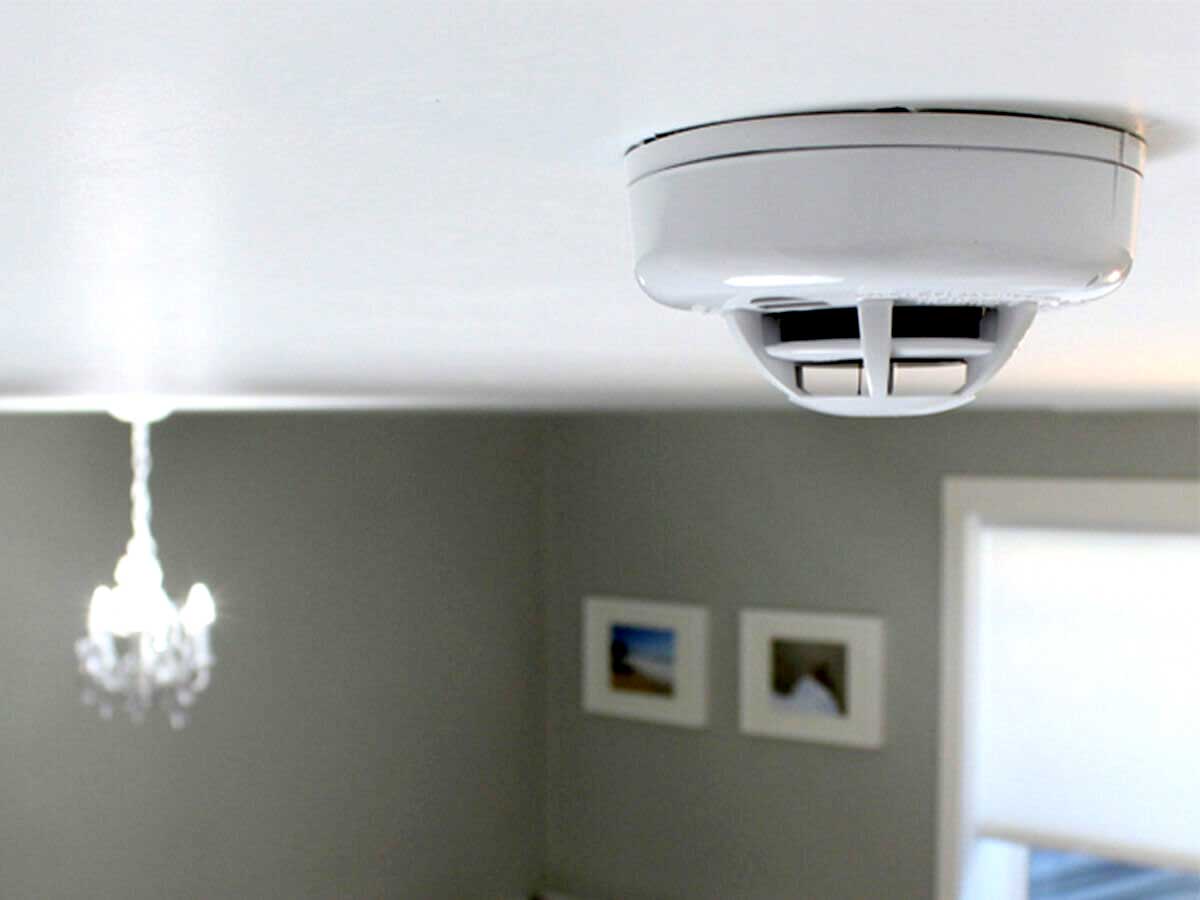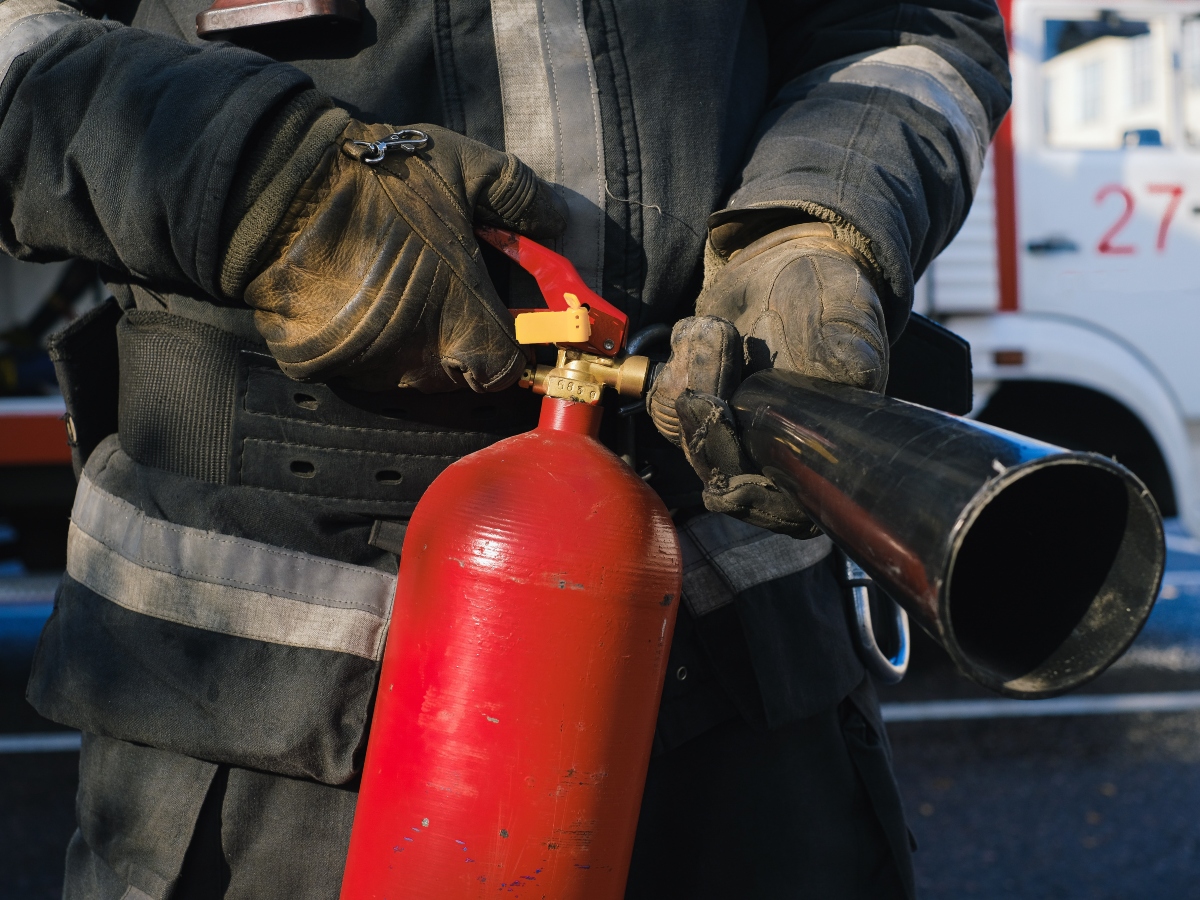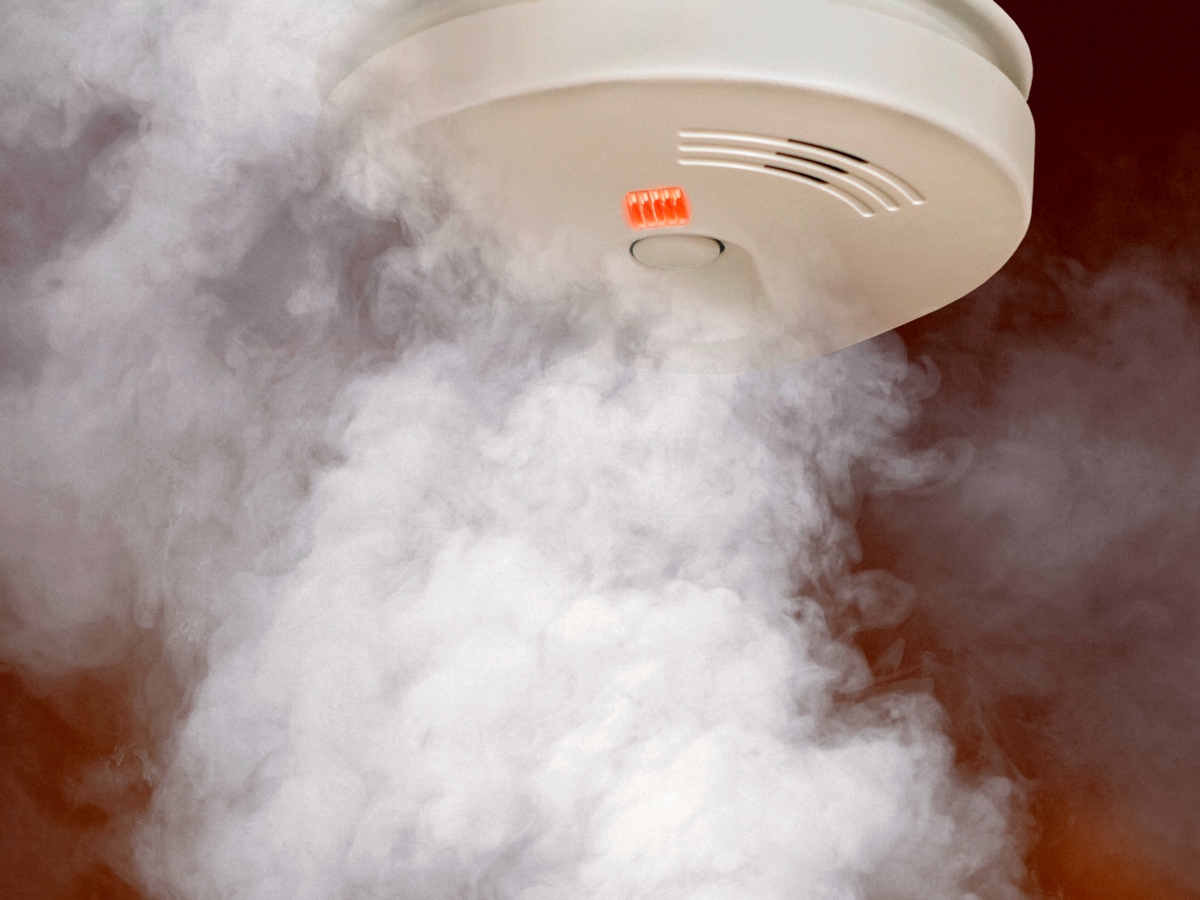The modern lifestyle is one of the many causes of fire spreading faster in homes than in the past. That’s why smoke alarms are essential to any home fire safety plan. These devices can help prevent injuries, save lives, and reduce property damage. But you may ask, “How many smoke detectors do I need in my home?”
Well, it depends on your home’s size. The National Fire Protection Agency (NFPA) recommends having one smoke detector per each level of your home. You should also have one in every sleeping room and an additional one outside each bedroom.
In 2021, an average of 1.35 million fires were registered with local fire departments in the US. Among these fires, 338,000 were on residential structures, causing 2,840 civilian deaths. With this information in mind, let’s dive deeper into how many smoke detectors you will need depending on your home size.
How Many Smoke Detectors Do I Need?
The NFPA recommends having a smoke detector in every sleeping room, outside each bedroom, and on every floor, including the basement. Of course, larger homes will need more smoke detectors. For example, if you have a two-story house with two bedrooms upstairs, you should have at least five smoke detectors. On the other hand, a split-level home with two bedrooms should have at least six smoke detectors. If the bedrooms are on different floors, have at least five. The recommended distance between two smoke detectors is 30 feet.
Adjacent or opposite bedrooms can use one shared smoke detector in the corridor, placed in a central position. Here is an important tip: when it comes to your safety and that of your loved ones, there is no such thing as too many smoke detectors. According to fire experts, you might only have two minutes to evacuate your home safely.
You might wonder why you need so many smoke detectors. The reason is that smoke can spread quickly through a home. So you want to ensure that you have a smoke detector in every room to give you the earliest possible warning. One of the most common causes of smoke detectors not activating due to smoke in the house is when the fire is out of range.
In cases where you have a hard-wired smoke alarm system, you can complement it with battery-powered alarms. Most people prefer having hard-wired alarms as they are more efficient and easy to maintain. The probability of dying in a home structure fire with functioning smoke alarms is 55% lower than in homes with one that did not function or without any.

Where Should I Mount My Smoke Detectors?
One of the best spots to mount your smoke detectors is the center of the ceiling. This is because smoke rises and moves horizontally when it reaches the ceiling. This movement makes it faster for a smoke detector to detect smoke and sound the alarm.
For pitched ceilings, avoid installing smoke detectors in the farthest area of the peak. Instead, mount it 4 inches (100 mm) down from the highest level of the peak. Wall mounting is another good option, although it’s better than ceiling mounting. The smoke detector should be fixed on the wall, at least 12 inches from the ceiling.
Avoid mounting your smoke detectors near windows or doors. The drafts from these openings can interfere with the detector’s ability to function correctly. Furthermore, avoid mounting the sensors near a kitchen or bathroom to prevent false alarms. Instead, allow spacing between the kitchen and bathroom at least 10 feet (3 meters).
Here are other things to keep in mind when installing smoke detectors in your home:
- Never paint smoke detectors
- Interconnect all your alarms for better results
- Ensure all interconnected alarms are from the same manufacturers
What Type of Smoke Detector Should I Have?
After knowing the answer to the question “how many smoke detectors do I need?”, it’s time to ask yourself about the type you need. Many types of smoke alarms are on the market today, but two kinds are most common: ionization and photoelectric.
- Ionization alarms are better at detecting fast-moving/flaming fires. Inside the chamber are two electrically charged plates with a radioactive material (Americium-241) between them. This material ionizes the air and allows current to flow between the plates. When smoke enters the chamber, it bonds with the ions and disturbs their flow, thus setting off the alarm.
- Photoelectric alarms are better at detecting smoldering fires. These smoke detector types use a beam of light with the light source aiming straight across the chamber. Below the light is a photo sensor. When smoke enters the chamber, the particles change the light direction and distribute it to different areas, including at the sensor. It’s this light that triggers the alarm.
Since these two smoke detector types detect different fires, the NFPA recommends a combination of both for increased protection. Furthermore, manufacturers are now designing smoke detectors with ionization and photoelectric technology (dual sensors), which is also a great option.

How Many Fire Extinguishers Should I Have?
According to the NFPA, you should have at least one fire extinguisher on every level of your home. Fire extinguishers can help you put out small fires or contain the fire before the fire department arrives. However, no matter the number of fire extinguishers in your house, the most important thing is to have a fire escape plan. The University of Rochester recommends having a smoke detection system before buying fire extinguishers.
Place fire extinguishers where they are visible and easily accessible in case of a fire, for example, along normal paths in the house, including hallways. The exact placement and type of extinguisher should depend on the type of hazard. For example, place a Class K fire extinguisher near the kitchen for fires caused by flammable cooking liquids. Class B for flammable and combustible liquid fires, and Class C fires involving energized electrical equipment.
The following table shows the maximum distance you should travel to reach a fire extinguisher.
Image Source: Nfpa.org
Should You Put a Smoke Detector in the Kitchen?
Smoke detectors are most suitable in the kitchen. The kitchen is one of the most common places where a fire starts. So it makes sense to put a smoke alarm in the kitchen to ensure you’re alerted as early as possible if a fire starts. However, smoke alarms can be a bit of a nuisance in the kitchen. They tend to go off when you’re cooking, which can be annoying if there’s no fire. Instead of a smoke detector, you can install a heat alarm that can sense an increase in temperature and alert you.
How Much Do Smoke Detectors Cost to Install?
Smoke detector installation costs in your home can range between $70 and $150. However, this cost will vary based on house size and layout, type of smoke detector, and your installation company. For example, a battery-powered smoke detector is cheaper than a hard-wired one and can start from around $8. Hard-wired detector costs start from approximately $20 for ionized technology.
If you have a two-story building with one bedroom and want to install battery-powered smoke detectors, you will need at least three. Since you can DIY battery-powered smoke detectors, you can use roughly $8 for each device, totaling to about $24.
Hard-wired smoke detector installation is a bit costly since it will need a professional to install it if you’re unfamiliar with home electrical work.
Basic Fire Safety Tips
Taking some simple precautions can go a long way in preventing a fire from starting. Here are a few essential fire safety tips to keep in mind:
- Test your smoke alarm at least once per month
- Clean your smoke detector with a vacuum once a year.
- Replace the batteries of the smoke detector when it chirps or twice every year.
- Teach everyone in your home basic fire safety steps, including how a smoke detector alarm sounds.
- Practice your home’s fire escape plan twice a year—conduct it any time of the day.
- For those with hearing impairment, you can use special alarms.
- Always attend to your candles. If you’re going to leave the room, blow them out first.
- Keep combustible materials away from heat sources. They include things like paper, cloth, and flammable liquids.
- Have a fire extinguisher handy. If a fire does start, you’ll be glad you have it.
- In the event of a fire, ensure that everyone is out of the home before using the extinguisher. Also, make sure there’s an exit behind you if you’re putting off a fire.
- Don’t overload electrical outlets. If you have too many plugs in one outlet, it can cause a fire.
- Switch off electrical sockets if not in use.
- Replace smoke detectors after every ten years.

Improve Your Home’s Safety with ONIT Home
So, how many smoke detectors do I need in my home? The number of smoke detectors you need in your home depends on your home’s size and layout. Generally, it would be best to place a smoke detector on each floor of your home. Also, put a smoke alarm in each bedroom and outside each sleeping area.
A smoke detector can help you prevent injuries, death, and property damage, making it a crucial device in any home. Get a smoke detector with a sticker from a recognized testing laboratory and ensure it’s installed by professionals, especially for hard-wired systems. At ONIT Home, we sell and help you install the best smoke-detecting system with our industry-leading equipment from trusted partners. We can also customize a home security system that can integrate with your smart home.
For more information, call us at 1-833-433-0331 or visit us online. Our dedicated experts are ready to assist you. Need to improve your family’s and home’s security? We’re ONIT!



